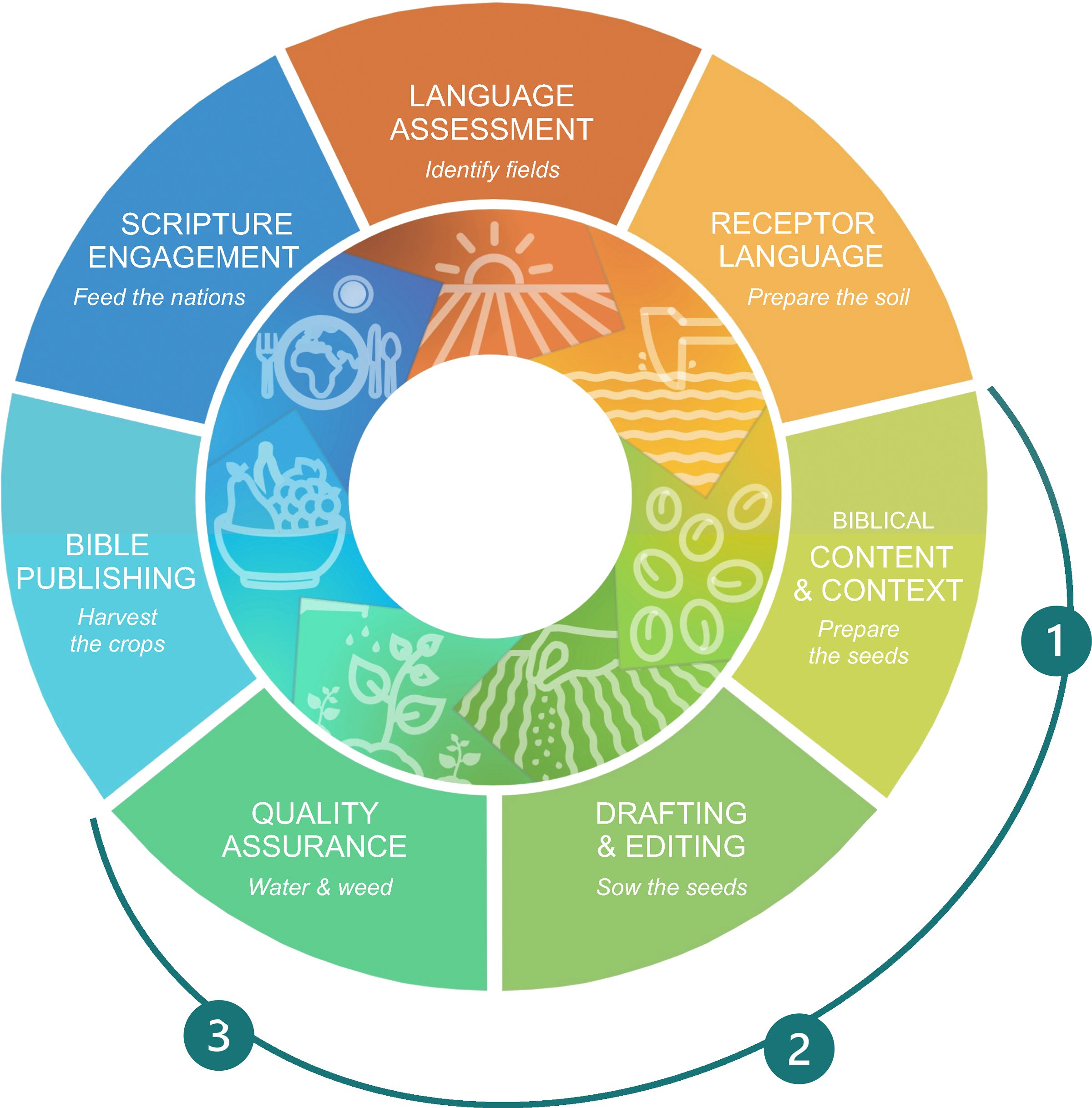Psalms: Layer by Layer is a project of Scriptura that seeks to provide scholarly yet accessible resources to Bible Translation teams working on the book of Psalms. As poetry, the Psalms derive much of their beauty and power not only from their content but also from their language.
- Translators need to understand the content, the form, and the poetic interplay if they are to make translations with equally high communicative effect and literary quality.
- As they Draft the new Bible translation, the translators need to understand the poetic structure and how each concept builds on the others.
- Our aim is to provide visualizations and resources that make accessible the rhetorical, high-level discourse structure of each Hebrew poem while also providing the full grammatical, syntactic, and semantic foundations so Translation Consultants and Advisors have the resources needed to evaluate each aspect of the translated text.

What are the layers in Psalms: Layer by Layer?
We use multiple lenses to analyze each Psalm. These various perspectives enable us to see how each aspect of the Psalm functions.
Analytic Layer
Analysis is the basic foundation for all our work is the classic divisions of language and scholarship into grammar, syntax, semantics, discourse and poetics.
Overview Layer
This Overview Layer is the initial point of contact for Bible translators. Designed for ease of use, it provides a concise synthesis of the psalm and serves as a gateway to the wealth of Analytical resources below. This layer allows translators to understand the interpretive conclusions of Scriptura scholars. In a single page or video, translators can grasp the essence of the psalm and the critical information they need to convey its meaning in their language. Its interactive interface ensures quick access to validation as required.
Exegetical Issues Layer
The Exegetical Issues videos are a unique resource that select the most relevant analytical academic research for translators. The videos both explain difficult passages and our conclusions while modeling a rigorous exegetical method and providing all the evidence and argumentation. The inner workings of exegesis are made accessible to non-academics.
Poetical Features Layer
The Poetic Features videos explore the native beauty and the power of the Hebrew poetry in the Psalms. “These poems deserve careful treatment so that the real beauty and power of the original can be felt, and the complete message can be experienced, rather than simply understood. If we reduce poetry to prose, the biblical message may lose its effect and, in a very real way, be robbed of some of its truth. Consistently translating poetic lines into flat prose is not being faithful to the text. It does not provide a dynamic, literary, or functionally equivalent translation.” (Wendland and Zogbo 2020:8)
Applied Layer
The Applied Layer is just beginning, as a rich repository of inspiration and learning. Its purpose is to showcase the diverse ways in which different language groups have used the Psalms to resonate with their culture. This repository will include a variety of expressions of God's Word, such as text, oral, and sign translations, visual art, music, and more. Each example will demonstrate how a different translation team has captured the essence of Hebrew poetry in its unique context.

